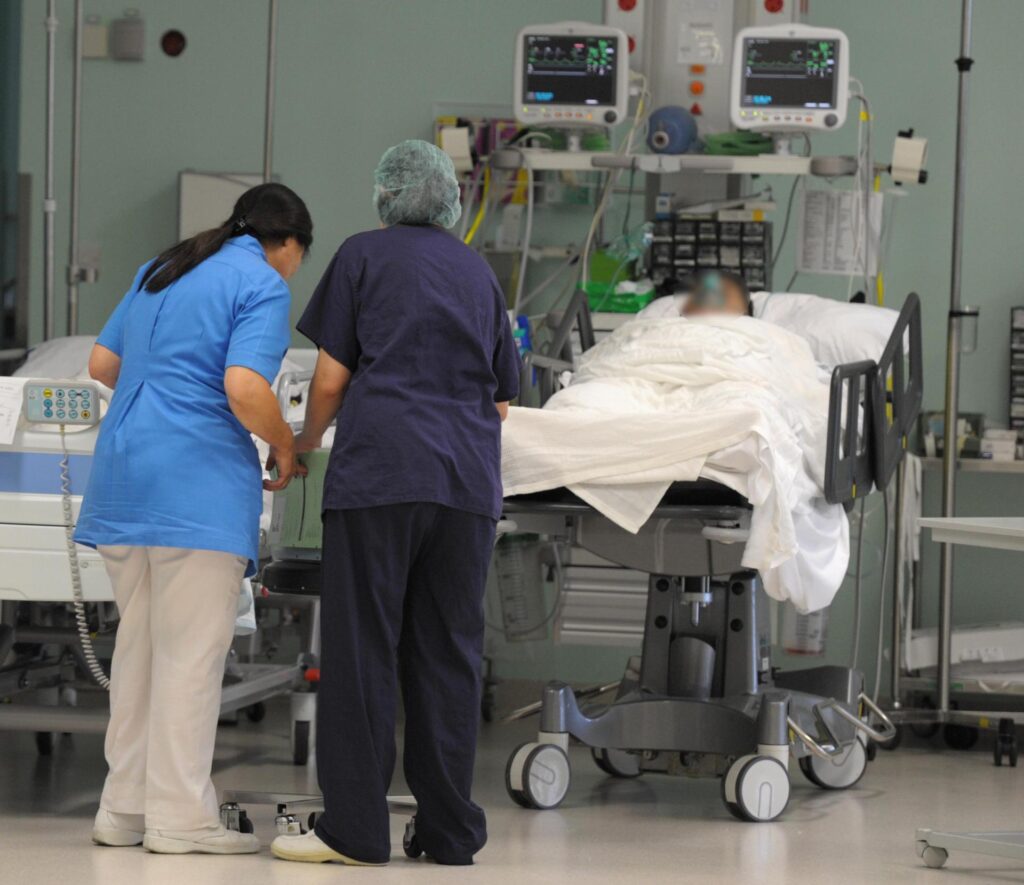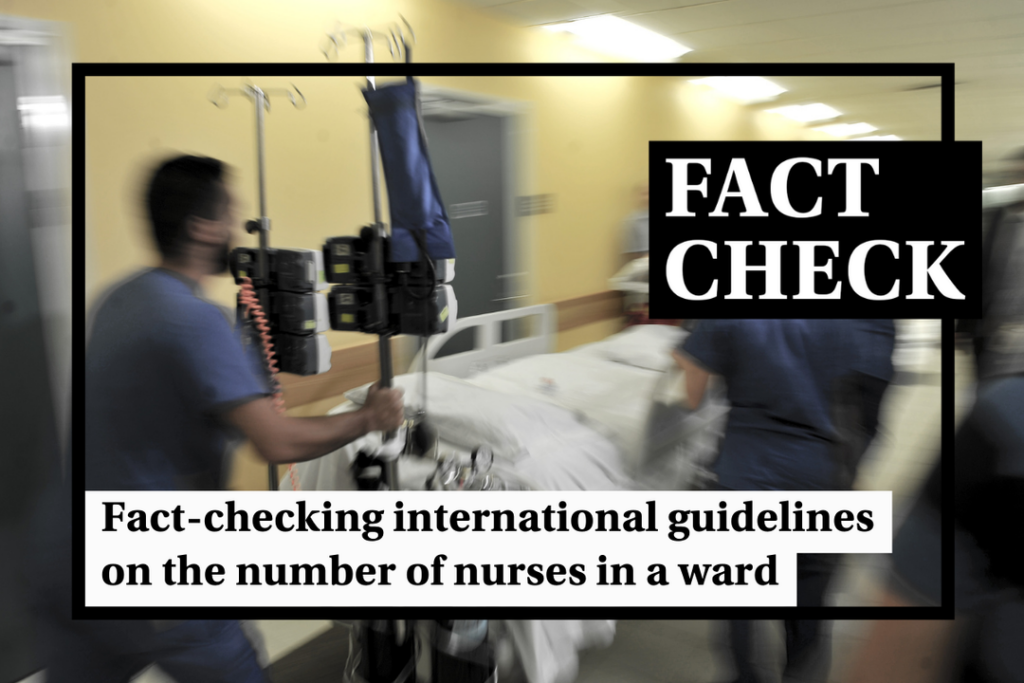Discussing a reported shortage of nurses at Mater Dei Hospital, Malta’s national hospital, the health ministry claimed that the hospital “aims to maintain nurse-to-patient ratios in medical wards as per international recommendations”.
The ministry was reacting to a magisterial inquiry into the death of renowned family doctor Mario Rizzo Naudi which flagged a “worrying” lack of resources at the hospital.
Court experts told the inquiry there were three nurses to cope with 23 patients at Mater Dei’s medical ward.
Nurse shortages have long been of concern to health authorities, with nursing union president Paul Pace once claiming that a single nurse was expected to attend to 37 patients at St. Vincent De Paule, a state-run home for older adults.
In reaction to the magistrate’s findings, Pace described three nurses for 23 patients as a “luxury”, saying that this is rarely followed, even though it is below the internationally recognised standard of six nurses for 24 patients.

Are there international staffing laws for nurses?
Legislation about nurse-to-patient ratios is still rare but is gradually becoming more widespread.
Australian states like Queensland introduced ratios which say that there must be one nurse for every four patients for day shifts and one nurse for every seven patients at night in some types of wards.
A few US states have adopted a similar approach, with Massachusetts and California both having legally mandated minimum numbers of nurses. In California, the ratio ranges from one nurse for every two patients in critical care, to one nurse for every six patients in some other wards.
Finland has also toyed with the idea of legally binding ratios, having introduced a ratio of a minimum of five nurses for every 10 patients in elderly long-term care, and later increasing this to seven nurses.
In Wales, the 2016 Nurse Staffing Levels Act obliges the health authorities “to calculate and take all reasonable steps to maintain nurse staffing levels”. If this sounds like a vague provision, that is because it is.
The Welsh Act does not actually establish a maximum number of patients to which each nurse can attend but instead obliges healthcare providers to “calculate the number of nurses appropriate to provide patient-centred care” every six months and ensure that a sufficient number of nurses are on their books.
Scotland has also launched plans to introduce similar legislation that is set to come into force next year. Elsewhere in the UK, there is no legislation that sets a minimum nurse-to-patient ratio.
According to the UK’s National Institute for Health and Care Excellence, “there is no single nursing staff-to-patient ratio that can be applied across the whole range of wards to safely meet patients’ nursing needs”.
However, it does recommend having no more than eight patients to one nurse during day shifts, saying that “there is evidence of increased risk of harm” when going above this number.
What does the EU recommend?
In practice, nothing.
The EU has clear directives on the training and recognition of nurses and care workers but it has not published guidelines on recommended nurse-to-patient ratios and each member State is free to follow its own standards.

Studies show that nurse-to-patient ratios tend to vary wildly across Europe.
One study estimated that some countries (such as Norway) have as few as five patients for each nurse, while nurses in some other countries, such as Spain and Germany, tend to care for as many as 13 patients at one go.
As expected, the quality of care and patient satisfaction was found to be much better in countries with lower ratios, with nurses less likely to experience burnout.
Norway’s excellent standard is also reflected in official EU data, with Eurostat reporting that it has the highest number of nursing professionals per 100,000 inhabitants in Europe, at 75.
Malta, by comparison, is reported as having 32 nursing professionals for every 100,000 people, with only five EU countries reporting a higher number.
However, this data is far from perfect.
For a start, it does not distinguish between qualified nurses and other caring personnel, such as care workers, making comparison on the number of qualified nurses difficult.
‘A ticking time bomb’
Nursing shortages across Europe have been described by the World Health Organisation as part of a “ticking time bomb”..
A 2022 WHO report said that the number of EU-trained nurses is dwindling, with many countries forced to recruit nurses from India, Nigeria and the Philippines to carry out essential services.
Even in cases where enough nurses are being trained, many countries are having trouble keeping them from leaving.
WHO says that low wages, burnout, and work-related stress are causing a mass exodus of nurses from poorer EU countries such as Romania to their wealthier EU neighbours.
Similar concerns have been raised in Malta.
A study published in medical journal The Lancet found that Malta experienced among the highest increase in nurses working in public healthcare between 1990 and 2019, however, nurses appear to have left in droves since then.
Estimates suggest that in 2021 over one in five nurses in Malta who are third-country nationals left the country in search of better working conditions elsewhere in Europe.

What guidelines do Malta’s nurses follow?
Pace told Times of Malta that the Malta Union of Midwives and Nurses follows the guidelines set out by the Royal College of Nursing.
The college is currently campaigning to establish UK-wide nurse-to-patient ratios, with its guidelines arguing in favour of a flexible approach to ratios, rather than a “meaningless” universal ratio.
The guidelines recommend establishing benchmarks and review mechanisms that would help healthcare providers understand the ideal ratio and mix of skills for their particular circumstances.
Nonetheless, the College does establish some broad recommendations, such as the need to have a skill mix ratio of 65% qualified nurses to 35% healthcare assistants at any given time and a minimum of three nurses for every patient under the age of two.
It is unclear whether the health ministry also follows these guidelines or whether the ministry is referring to other “international recommendations” in its comments.
Questions sent to the ministry remain unanswered at the time of publication.
Verdict
International recommendations on nurse-to-patient ratios tend to vary between countries, with very few having set a minimum ratio by law.
The EU does not issue formal guidelines and member states are free to establish their own standards.
Maltese court experts’ testimony that there were three nurses attending to 23 patients in the hospital suggests that this is far below the ratio in most other EU countries.
The nurses’ union follows guidelines by the Royal College of Nursing, which says that systems should be in place to benchmark and review staff ratios, rather than establishing universal ratios.
Whether or not the health ministry also adheres to these guidelines is unclear as it ministry did not reply to questions.
The Times of Malta fact-checking service forms part of the Mediterranean Digital Media Observatory (MedDMO) and the European Digital Media Observatory (EDMO), an independent observatory with hubs across all 27 EU member states that is funded by the EU’s Digital Europe programme. Fact-checks are based on our code of principles.
Let us know what you would like us to fact-check, understand our ratings system or see our answers to Frequently Asked Questions about the service.





